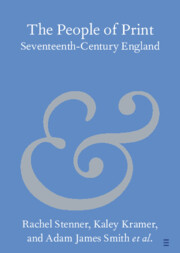224 results
106 Transforming Health Equity with an Innovative Social Determinants of Health Platform: Application of HOUSES Index to Colorectal Cancer Screening
- Part of
-
- Journal:
- Journal of Clinical and Translational Science / Volume 8 / Issue s1 / April 2024
- Published online by Cambridge University Press:
- 03 April 2024, p. 30
-
- Article
-
- You have access
- Open access
- Export citation
The probiotic Lacticaseibacillus rhamnosus HN001 influences the architecture and gene expression of small intestine tissue in a piglet model
-
- Journal:
- British Journal of Nutrition / Volume 131 / Issue 8 / 28 April 2024
- Published online by Cambridge University Press:
- 06 December 2023, pp. 1289-1297
- Print publication:
- 28 April 2024
-
- Article
-
- You have access
- Open access
- HTML
- Export citation
The prevalence of vegetarians, vegans and other dietary patterns that exclude some animal-source foods in a representative sample of New Zealand adults
-
- Journal:
- Public Health Nutrition / Volume 27 / Issue 1 / 2024
- Published online by Cambridge University Press:
- 05 December 2023, e5
-
- Article
-
- You have access
- Open access
- HTML
- Export citation
Agricultural Research Service Weed Science Research: Past, Present, and Future
-
- Journal:
- Weed Science / Volume 71 / Issue 4 / July 2023
- Published online by Cambridge University Press:
- 16 August 2023, pp. 312-327
-
- Article
-
- You have access
- Open access
- HTML
- Export citation
Federal agency perspectives and funding opportunities for weed and invasive plant research
-
- Journal:
- Weed Science / Volume 71 / Issue 4 / July 2023
- Published online by Cambridge University Press:
- 16 August 2023, pp. 328-329
-
- Article
-
- You have access
- Open access
- HTML
- Export citation
Probiotics as Adjunctive Treatment in Major Depressive Disorder: Estimates of Treatment Effect and Underlying Mechanisms From a Double-Blind Placebo-Controlled Randomised Pilot Trial
-
- Journal:
- BJPsych Open / Volume 9 / Issue S1 / July 2023
- Published online by Cambridge University Press:
- 07 July 2023, pp. S64-S65
-
- Article
-
- You have access
- Open access
- Export citation

The People of Print
- Seventeenth-Century England
-
- Published online:
- 18 May 2023
- Print publication:
- 08 June 2023
-
- Element
- Export citation
Injury Outcomes of the 2017 Charlottesville TARMAC Attack
-
- Journal:
- Prehospital and Disaster Medicine / Volume 38 / Issue S1 / May 2023
- Published online by Cambridge University Press:
- 13 July 2023, p. s6
- Print publication:
- May 2023
-
- Article
-
- You have access
- Export citation
Human Genetics Society of Australasia Position Statement: Use of Polygenic Scores in Clinical Practice and Population Health
-
- Journal:
- Twin Research and Human Genetics / Volume 26 / Issue 1 / February 2023
- Published online by Cambridge University Press:
- 23 March 2023, pp. 40-48
-
- Article
-
- You have access
- Open access
- HTML
- Export citation
RE: Proposed Assisted Dying Bill: implications for mental healthcare and psychiatrists
-
- Journal:
- The British Journal of Psychiatry / Volume 222 / Issue 4 / April 2023
- Published online by Cambridge University Press:
- 20 March 2023, p. 175
- Print publication:
- April 2023
-
- Article
-
- You have access
- HTML
- Export citation
Chapter 1 - The Ancient World
-
- Book:
- A History of Western Philosophy of Music
- Published online:
- 18 January 2023
- Print publication:
- 26 January 2023, pp 1-34
-
- Chapter
- Export citation
Contents
-
- Book:
- A History of Western Philosophy of Music
- Published online:
- 18 January 2023
- Print publication:
- 26 January 2023, pp vii-viii
-
- Chapter
- Export citation
Preface
-
- Book:
- A History of Western Philosophy of Music
- Published online:
- 18 January 2023
- Print publication:
- 26 January 2023, pp ix-x
-
- Chapter
- Export citation
Dedication
-
- Book:
- A History of Western Philosophy of Music
- Published online:
- 18 January 2023
- Print publication:
- 26 January 2023, pp v-v
-
- Chapter
- Export citation
Index
-
- Book:
- A History of Western Philosophy of Music
- Published online:
- 18 January 2023
- Print publication:
- 26 January 2023, pp 380-384
-
- Chapter
- Export citation
Chapter 3 - The Early Modern Period: 1500–1800
-
- Book:
- A History of Western Philosophy of Music
- Published online:
- 18 January 2023
- Print publication:
- 26 January 2023, pp 66-163
-
- Chapter
- Export citation
Bibliography
-
- Book:
- A History of Western Philosophy of Music
- Published online:
- 18 January 2023
- Print publication:
- 26 January 2023, pp 357-379
-
- Chapter
- Export citation
Chapter 2 - The Middle Ages
-
- Book:
- A History of Western Philosophy of Music
- Published online:
- 18 January 2023
- Print publication:
- 26 January 2023, pp 35-65
-
- Chapter
- Export citation
Copyright page
-
- Book:
- A History of Western Philosophy of Music
- Published online:
- 18 January 2023
- Print publication:
- 26 January 2023, pp iv-iv
-
- Chapter
- Export citation
Chapter 4 - The Modern Period: 1800–1950
-
- Book:
- A History of Western Philosophy of Music
- Published online:
- 18 January 2023
- Print publication:
- 26 January 2023, pp 164-255
-
- Chapter
- Export citation



